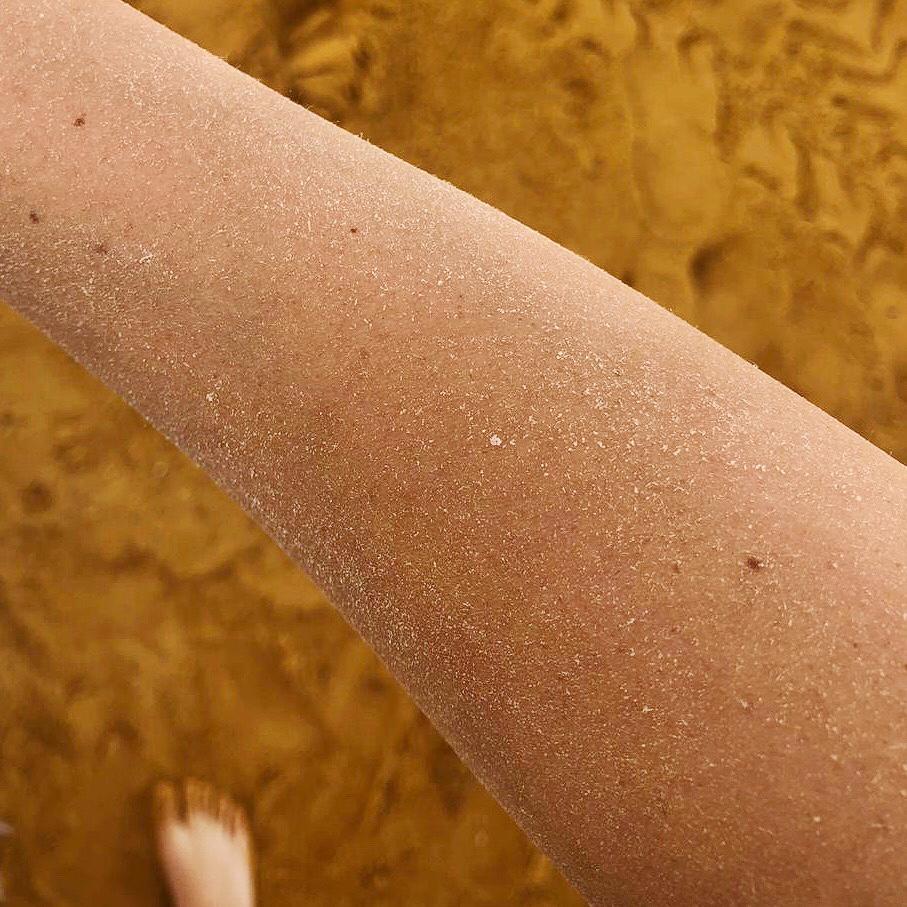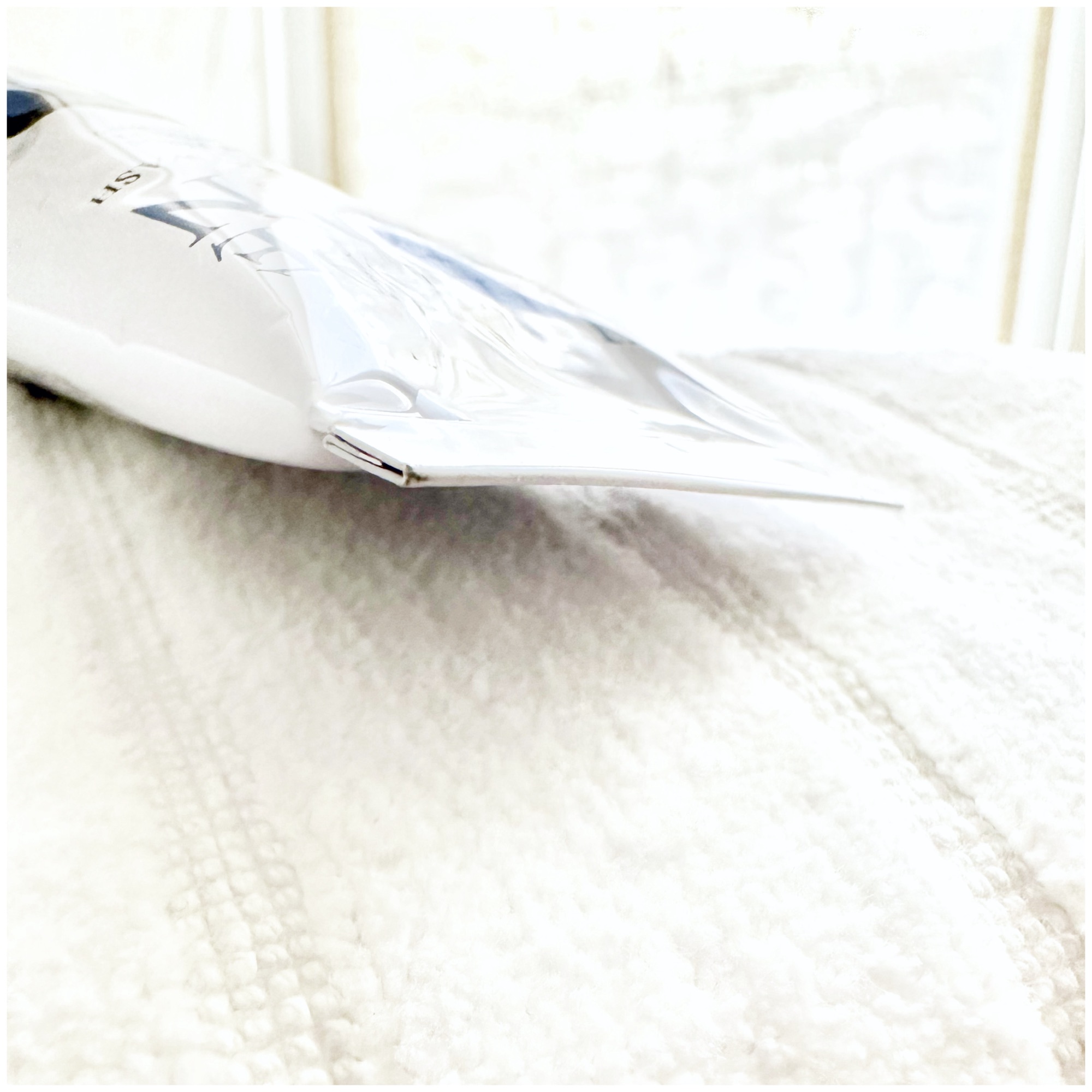Not An Allergen
Dead Sea/Dead Sea Salt & Mud
Salt is not on published lists of common allergens and — when pure, unbleached, unprocessed, and without other allergens in a formulation — can be a yummy surface-exfoliating scrub for your skin.
The Dead Sea, the saltiest and deepest lake on earth, is a popular tourist destination in part for its purported benefits for the skin. The silt and mud that surrounds the Dead Sea is renowned for its high concentration of sodium, potassium, magnesium, and other minerals. Many table salts have potassium iodide (a halogen) plus anti caking ingredients that may include aluminum. Sea salt is much less processed. It is simply dried from sea water and mostly contains sodium chloride and magnesium. These are not contact allergens but may cause a form of folliculitis called halogen acne, which may be misdiagnosed as contact dermatitis.
While there are some studies that imply anti-inflammatory benefits to soaking in the Dead Sea, we could use more evidence about the efficacy of Dead Sea materials in topical skincare products. The bigger issue for contact dermatitis is that many Dead Sea products do contain top skin allergens. While soaking in the Dead Sea itself, or even using actual, unprocessed salts from the Dead Sea may be beneficial, be wary of allergens that may be in the formulation of a product that claims it contains Dead Sea salt or mud.
A final note on salt: avoid it if you have a halogen sensitivity, which can manifest as acne, rashes, darkening, or dryness around the mouth, or on the chin or jawline (or in chronically dry, flaking lips). If you are sensitive to halogens, it’s best to cut down on salt and iodides in general in your foods, but also in vitamins, skin products, and drinks — check out this handy halogen-free diet, and learn more about peri-oral dermatitis here.
If you have a history of sensitive skin, don’t guess: random trial and error can cause more damage. Ask your dermatologist about a patch test.
To shop our selection of hypoallergenic products, visit vmvhypoallergenics.com. Need help? Ask us in the comments section below, or for more privacy (such as when asking us to customize recommendations for you based on your patch test results) contact us by email, or drop us a private message on Facebook.
For more:
On the prevalence of skin allergies, see Skin Allergies Are More Common Than Ever and One In Four Is Allergic to Common Skin Care And Cosmetic Ingredients.
To learn more about the VH-Rating System and hypoallergenicity, click here.
Main References:
Regularly published reports on the most common allergens by the North American Contact Dermatitis Group and European Surveillance System on Contact Allergies (based on over 28,000 patch test results, combined), plus other studies. Remember, we are all individuals — just because an ingredient is not on the most common allergen lists does not mean you cannot be sensitive to it, or that it will not become an allergen. These references, being based on so many patch test results, are a good basis but it is always best to get a patch test yourself.
1. Warshaw, E.M., Maibach, H.I., Taylor, J.S., et al. North American contact dermatitis group patch test results: 2011-2012. Dermatitis. 2015; 26: 49-59
2. W Uter et al. The European Baseline Series in 10 European Countries, 2005/2006–Results of the European Surveillance System on Contact Allergies (ESSCA). Contact Dermatitis 61 (1), 31-38.7 2009
3. Wetter, DA et al. Results of patch testing to personal care product allergens in a standard series and a supplemental cosmetic series: An analysis of 945 patients from the Mayo Clinic Contact Dermatitis Group, 2000-2007. J Am Acad Dermatol. 2010 Nov;63(5):789-98.
4. Verallo-Rowell VM. The validated hypoallergenic cosmetics rating system: its 30-year evolution and effect on the prevalence of cosmetic reactions. Dermatitis 2011 Apr; 22(2):80-97
5. Ruby Pawankar et al. World Health Organization. White Book on Allergy 2011-2012 Executive Summary.
6. Misery L et al. Sensitive skin in the American population: prevalence, clinical data, and role of the dermatologist. Int J Dermatol. 2011 Aug;50(8):961-7.
7. Warshaw EM1, Maibach HI, Taylor JS, Sasseville D, DeKoven JG, Zirwas MJ, Fransway AF, Mathias CG, Zug KA, DeLeo VA, Fowler JF Jr, Marks JG, Pratt MD, Storrs FJ, Belsito DV. North American contact dermatitis group patch test results: 2011-2012.Dermatitis. 2015 Jan-Feb;26(1):49-59.
8. Warshaw, E et al. Allergic patch test reactions associated with cosmetics: Retrospective analysis of cross-sectional data from the North American Contact Dermatitis Group, 2001-2004. J AmAcadDermatol 2009;60:23-38.
9. Foliaki S et al. Antibiotic use in infancy and symptoms of asthma, rhinoconjunctivitis, and eczema in children 6 and 7 years old: International Study of Asthma and Allergies in Childhood Phase III. J Allergy Clin Immunol. 2009 Nov;124(5):982-9.
10. Kei EF et al. Role of the gut microbiota in defining human health. Expert Rev Anti Infect Ther. 2010 Apr; 8(4): 435–454.
11. Thavagnanam S et al. A meta-analysis of the association between Caesarean section and childhood asthma. Clin Exp Allergy. 2008;38(4):629–633.
12. Marks JG, Belsito DV, DeLeo VA, et al. North American Contact Dermatitis Group patch-test results, 1998 to 2000. Am J Contact Dermat. 2003;14(2):59-62.
13. Warshaw EM, Belsito DV, Taylor JS, et al. North American Contact Dermatitis Group patch test results: 2009 to 2010. Dermatitis. 2013;24(2):50-99.
14. Jacob SE, Scheman A, McGowan MA. Allergen of the Year: Propylene Glycol. Dermatitis. 2017 Nov 10. doi: 10.1097/DER.0000000000000315.
15. McGowan MA, Scheman A, Jacob SE. Propylene Glycol in Contact Dermatitis: A Systematic Review. Dermatitis. 2017 Oct 23. doi: 10.1097/DER.0000000000000307.
Want more great information on contact dermatitis? Check out the American Contact Dermatitis Society, Dermnet New Zealand, and your country’s contact dermatitis association.







